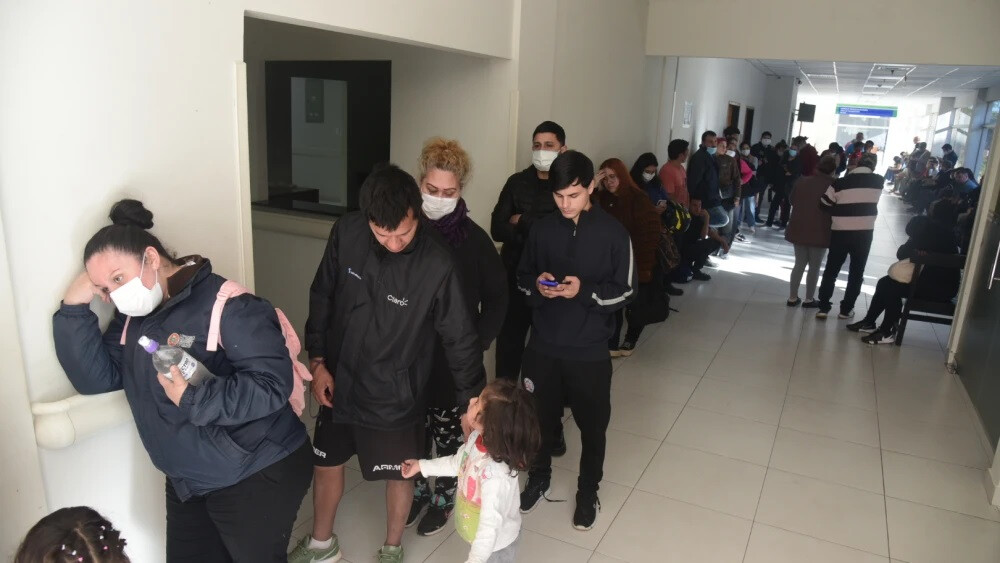
Paraguay's Social Security Institute (IPS) has approved nearly 2,000 flu-related sick leave applications in just the first half of June, signaling an emergency due to the rapid spread of respiratory illnesses. Considering that 2,429 sick leave applications were processed throughout the entire month of May, June is expected to hit an all-time high. Influenza, acute bronchitis, and COVID-19 are identified as the primary reasons for these applications, necessitating urgent action from public health authorities.
Record-Breaking Sick Leave Applications Highlight Severity of June Flu Season
According to data released by the IPS Department of Occupational Risks and Subsidies, a total of 1,953 individuals applied for sick leave due to influenza by June 15th. This figure is close to 80% of the total applications in May (2,429 cases), underscoring the severity of the current flu season by reaching a record number in just two weeks. Given that only 1,724 sick leave applications were submitted in April, the sharp increase in respiratory illnesses in June is evident. Tania Ibáñez, Director of the Occupational Risk Management Department, warned, "Mid-June is already approaching May's figures, indicating that the number of flu-related sick leave approvals will further increase this month."
Diseases classified as influenza include various respiratory infections. Currently, the most frequently reported illnesses are influenza, acute bronchitis, and COVID-19. These diseases exhibit similar symptoms, making early diagnosis challenging, and their rapid transmission is a major factor contributing to the widespread increase in sick leave applications across society.
Sick Leave Duration and Extension Conditions: Medical Judgment is Paramount
The average duration for flu-related sick leave is 5 to 7 days. However, this period can be adjusted flexibly depending on the patient's condition. Director Ibáñez explained, "Since the course of the illness varies for each patient, continuous medical supervision is essential. If a patient does not respond well to prescribed medication or develops complications, the sick leave period may be extended based on the doctor's judgment." This emphasizes the importance of continuously monitoring the patient's recovery to provide the optimal period of rest.
Limitations and Improvements of the Online Sick Leave System: Urgent Need to Resolve Information Delays
The IPS sick leave application and approval system operates online, offering convenience, but system issues frequently lead to complaints. In particular, it's common for certificates required by employers not to be issued after sick leave is applied for, or for information to be reflected late in the system.
Regarding this, Director Ibáñez explained, "Sick leave information is issued from a separate electronic system and then transferred to the sick leave management system we use. This process occurs once daily around 2 PM." Due to this information transfer method, sick leave applications submitted in the morning are reflected in the system the same afternoon or the next morning, but applications submitted in the afternoon may take up to 48 hours to be confirmed.
Therefore, if information does not appear in the system after 72 hours of applying for sick leave, individuals must directly contact the administrative department of the medical center that approved the leave. This delay problem can cause unnecessary friction with employers as employees are unable to submit sick leave certificates in a timely manner. Thus, improving the system to accelerate information processing is an urgent task.
Sick Leave Subsidy Calculation and Payment Criteria: First Day Excluded
Sick leave subsidies due to illness are calculated based on the employee's declared wages over the last four months. Director Ibáñez explained, "The average daily wage is calculated from the last four months' average income, and then 50% of this amount is multiplied by the number of sick leave days to determine the final subsidy."
It's important to note that sick leave subsidies for general illnesses are paid starting from the second day. This means that if someone takes three days of sick leave, the first day is excluded from subsidy payment, and only two days' worth of subsidy will be paid. This can be interpreted as clarifying the subsidy payment criteria for short-term sick leave and intending to reduce unnecessary short-term sick leave applications.
IPS Response and Future Outlook Amid Surging Respiratory Illnesses
As Paraguay enters its winter season, respiratory illnesses are expected to become even more prevalent. IPS is working to address the surge in sick leave applications by reviewing its internal systems and focusing on increasing medical personnel and improving treatment efficiency. Furthermore, it is urging citizens to actively cooperate in preventing respiratory illnesses by adhering to personal hygiene rules, wearing masks, and getting vaccinated.
This flu season will be a critical period, testing IPS's capacity and system efficiency more than ever before. Not only are smooth processing of sick leave applications and transparent information provision essential, but proactive measures to prevent the spread of infectious diseases are also required. Failure to do so could lead to a decline in overall societal productivity and an overburdened healthcare system.
[Copyright (c) Global Economic Times. All Rights Reserved.]






























